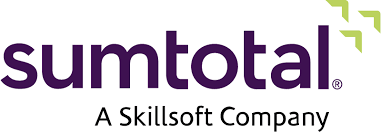What sets highly effective small and medium business leaders apart? Their workforces. I have been analyzing workforces for almost 20 years and have witnessed everything from the dramatic hits for leaders stuck in cul-de-sacs to the massive rewards for those who addressed workforce challenges headfirst. Frequently the small and medium businesses fail because despite their motivation they are held back by fear — fear over budget, time or just sheer uncertainty.
But, if you want to succeed and emulate the habits of the successful, first you need to know what habits they have.
There are five.
#1 They Actively Look at Integrated Data
Data analysis starts at the data collection level. Successful small and medium business leaders place a high value on workforce data from the shop floor level. Often this means having the ability to access real-time information from time clocks. It can also mean integrated time and attendance, or connecting scheduling and absence with payroll for zero-error paydays; nothing stops production like a problem with pay. Nevertheless, the true winning combination is linking data to learning and talent initiatives; this gives these leaders true visibility into their workforces, enabling them to make data-backed HCM decisions.
#2 They Reward Positive Workforce Trends
Often leaders focus on data to pinpoint problem areas within their workforces. While top leaders do this too, they also notice positive actions and reward them accordingly. A recent, clever, example is a client that was tracking occurrences of employees who picked up shifts bids for graveyard hours, was able to acknowledge and reward them. By doing this, not only did it help build the team, but it also encouraged others to pick up these undesired shifts as now they saw the additional benefits of doing so.
#3 They Don’t Have Routine Manual Processes
Nothing grinds the gears of highly effective small and medium business leaders like tedious and time-consuming manual tasks. In fact, it bothers them so much that they quickly become automated. Granted, sometimes this is driven by a healthy fear of non-compliance, like the need to track current certifications, but other times, such as, collecting timesheets, validating leave requests against earned accruals, or making schedule changes to accommodate employees, it’s because they have much better things to do with their time.
#4 They Seek Growth
Highly-effective leaders are purpose-driven. Which means they expect no demand to see growth. Some systems are not scalable, you need to either rip and replace, slowing production and losing their investment or worse, they prevent/stop growth opportunities because companies incorrectly believe they don’t have the HCM or workforce management capacity to keep up. This is a big mistake but one that’s common in the small and medium business world. The best in class don’t make investments that they’ll lose when they grow, they invest for tomorrow – not today.
#5 They Expect Significant ROI
When people and numbers are working in harmony it means goals are being met and business is booming. Highly effective leaders expect their workforce management systems to provide for revenue growth which in turn proves their initial investment.
SumTotal Systems has a new model for Workforce Management called Rapid Deployment, which is ideal for small and medium businesses because it grows as your business grows.
To learn more about it, read our new ebook “Seven BIG Ideas for Small and Medium Businesses” and grow as your business grows.









